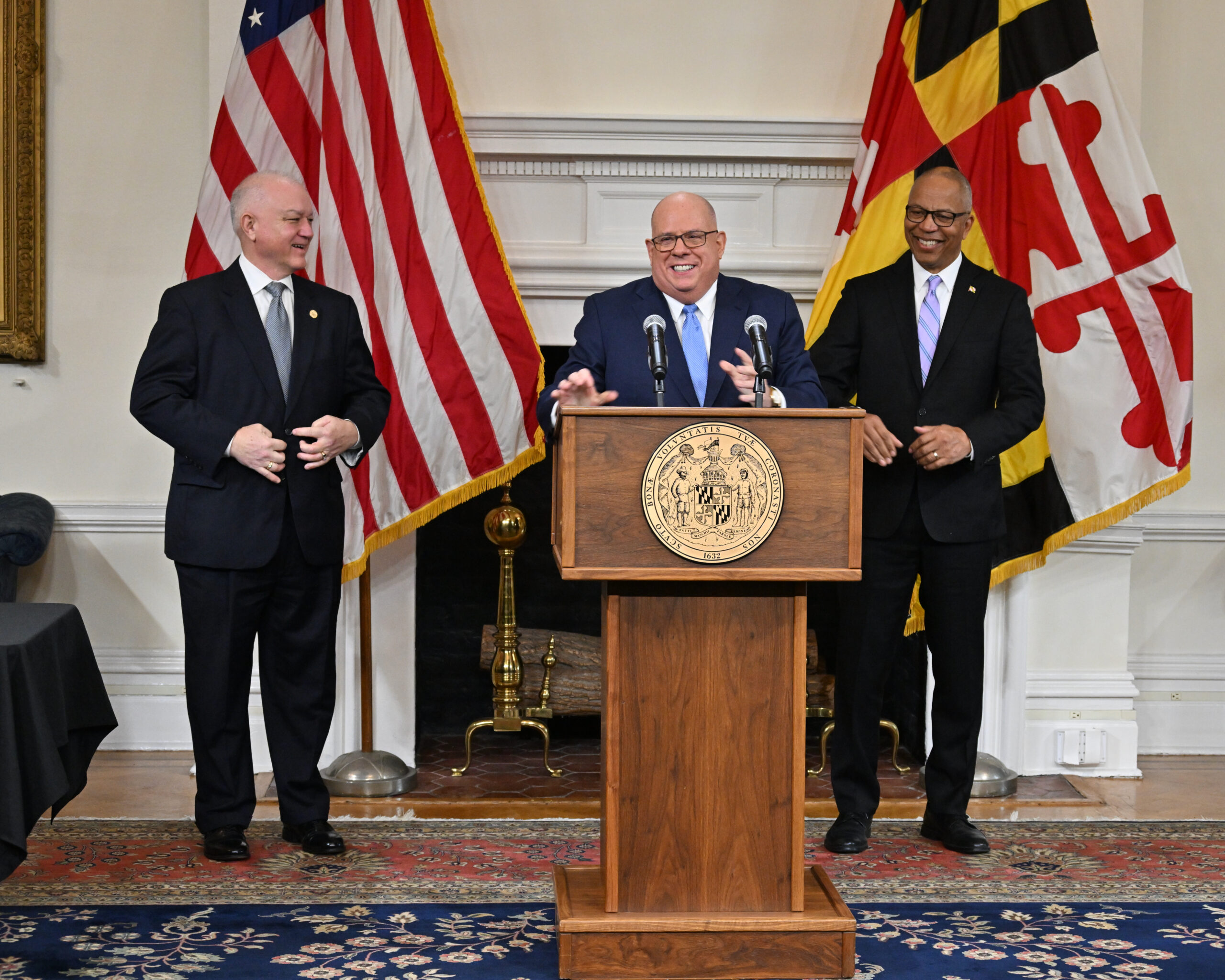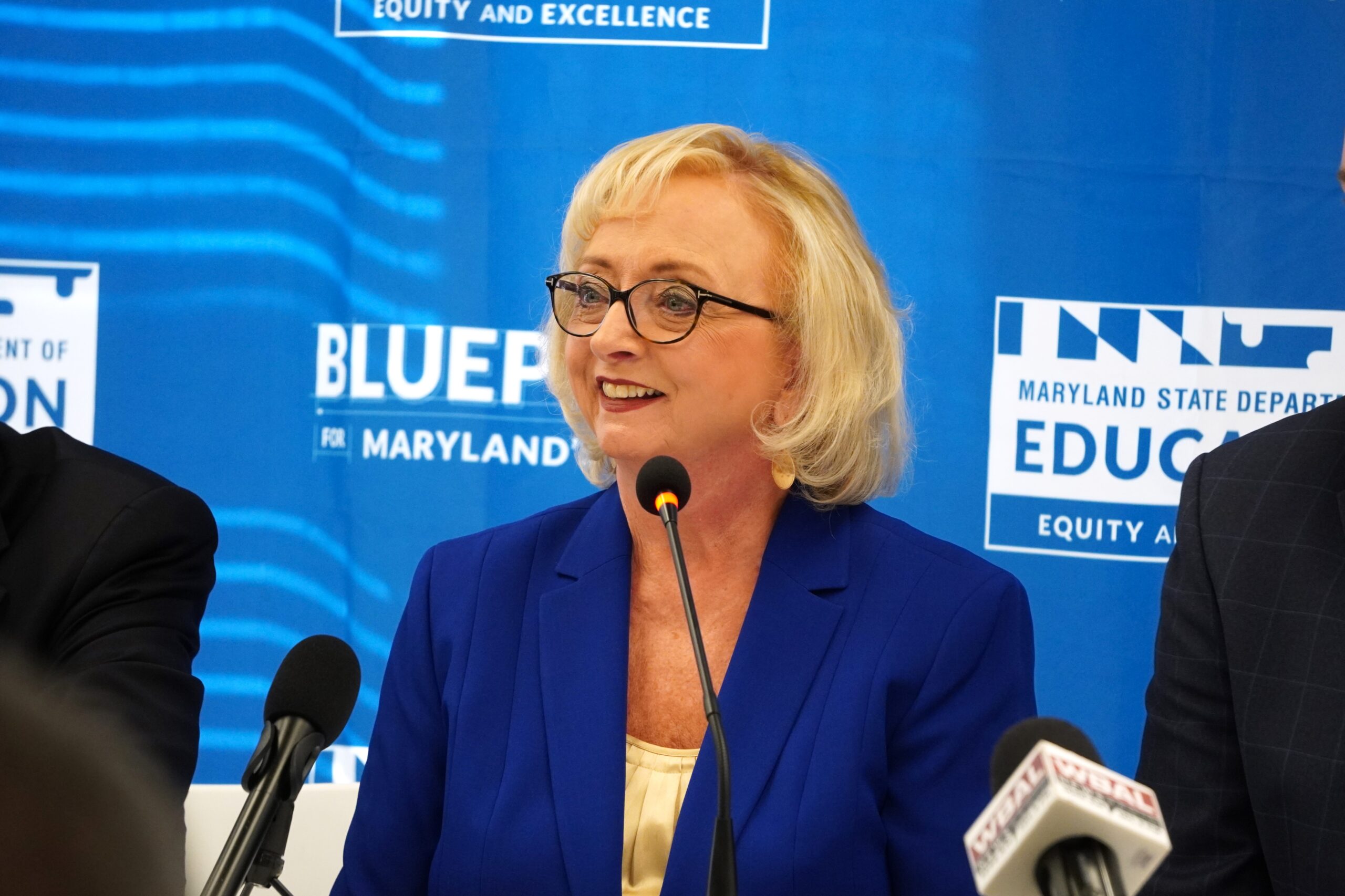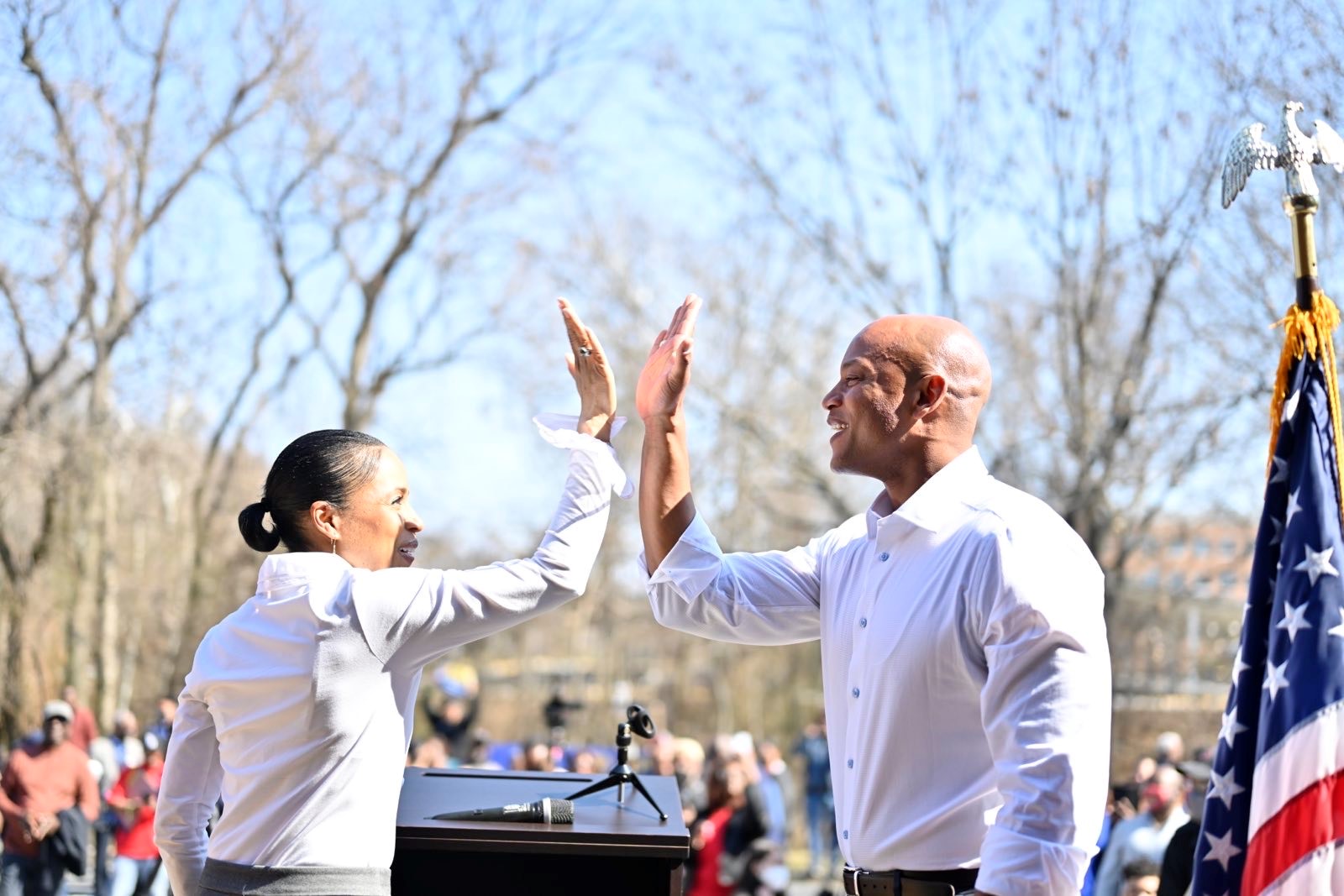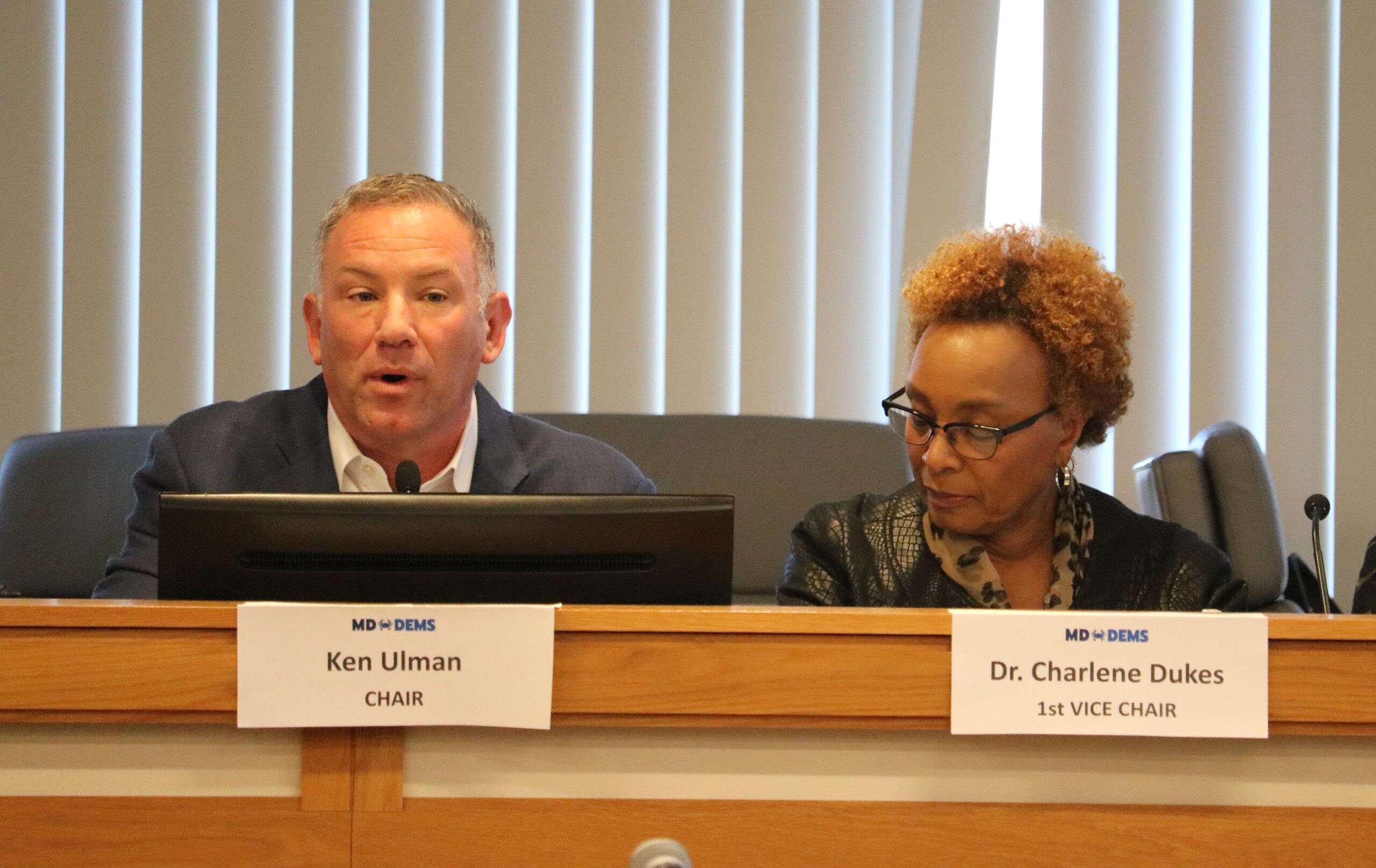As Democrats prepare to retake power in Annapolis, Hogan issues warning on spending

When Maryland’s Republican governor, Larry Hogan, leaves office a month from now, eight years of power sharing in Annapolis will come to an end. Gov.-elect Wes Moore (D), who gets sworn-in on Jan. 18, will govern alongside a General Assembly where Democrats enjoy even larger super-majorities than they do now.
In addition, state lawmakers will have significant budgetary authority they’ve never had, thanks to voter adoption of a constitutional amendment in 2020 that gives lawmakers the power to add spending to the executive’s budget submission, not just cut.
Against that backdrop, Hogan on Thursday warned incoming leaders to keep a tight lid on spending. Failure to do so, he told reporters at a State House news conference, would jeopardize what he called the “best fiscal position that the state has ever been in.”
“It would be a mistake for the legislature to use its newly expanded budgetary power to return to the old habits of raiding the Rainy Day Fund or recklessly spending down the surplus,” the governor said. “We’ve worked too hard and made too much progress to turn back the clock.”
Maryland has $5.5 billion in reserves, much of it attributable to federal aid. Congress approved massive sums to help states fight the COVID-19 pandemic and the economic downturn that followed.
Hogan said the Fiscal Year 2024 budget proposal that he will leave for the incoming Moore administration recommends keeping $2.9 billion in the Rainy Day fund, an amount equal to 12% of the state’s general fund revenues. Those funds leave Maryland “prepared for any future challenges or economic downturns,” he said.
A few hours after Hogan’s news conference, members of the General Assembly’s Spending Affordability Committee unanimously approved spending guidelines that leaders described as fiscally prudent.
They agreed that as they work on the budget for FY 2024 in the upcoming legislative session, they would ensure that ongoing revenues exceed ongoing spending by at least $100 million. They also agreed to recommend several other measures that would put the brakes on spending and guarantee that at least 10% of the state operating budget remain in reserve in the Rainy Day fund.
They also embraced proposed one-time investments to shore up the state workforce, improve behavioral health services, bolster the transportation infrastructure, and guarantee spending mandated by the ambitious Blueprint for Maryland’s Future education reform plan.
“This is a fiscally responsible approach,” said state Sen. James Rosapepe (D-Prince George’s), a co-chair of the spending panel. “It’s designed to take the good times and be prudent.”
In a statement, Senate President Bill Ferguson (D-Baltimore City) did not directly address Hogan’s warnings about the possibility of the legislature and new administration amping up spending, but said that lawmakers have always balanced the needs of Marylanders within budgetary restraints.
“In the legislature, we know how to be pragmatic, and we know how to spend responsibly while balancing our state’s most essential needs,” he said. “In 2023, the Senate’s priority is to build in the momentum of the last term as we continue to move the state forward in a fiscally responsible way.”
Ferguson in the statement also noted that the voters “overwhelmingly approved the Senate’s responsible leadership style and affirmed our previous legislative agenda by expanding our majority in the upcoming term.” Democrats picked up seats in the Senate and House in November, adding to their supermajorities.
The juxtaposition of Hogan’s remarks and the legislative committee vote underscored a busy and consequential day on the fiscal front in Annapolis. Sandwiched between the two events was the final meeting of the year of the Maryland Board of Revenue Estimates — the final after 16 years for outgoing Comptroller Peter Franchot (D) and the final after eight years for Hogan’s Budget secretary, David Brinkley.
The board voted to increase state revenue projections for Fiscal Year 2023, which ends on June 30, to $23.74 billion, an uptick of $55.8 million that represents less than one-quarter of 1% of annual revenues.
The board, which consists of Franchot, Brinkley and state Treasurer Dereck Davis (D), also lowered revenue projections for FY 2024 to $25.1 billion, a decrease of $166.8 million from the forecast approved in September.
The slight increase for the current fiscal year shows that revenue collections are generally performing as expected since September’s report, which took a more conservative approach, officials said. The more substantial reduction for FY 2024 reflects a decrease in capital gains income and unchanged projections in withholding, sales and use, and corporate income taxes, three of the state’s biggest revenue sources.
“It’s a stark reminder that the days of counting on federal stimulus money have come and gone,” Franchot said. “An economic slowdown is here.”
Debating Hogan’s fiscal legacy
When Hogan took office in 2015, the nation was still grappling with the after-effects of the Great Recession. He said that on his watch, Maryland erased a structural deficit and grew a surplus — what he called “a $10 billion turnaround.”
The governor’s assessment of the state’s fiscal situation is not universally shared. “[B]y any reasonable standard, the state was doing pretty well before he became governor, and it’s still just fine in most respects,” the Baltimore Sun said in an editorial on Wednesday. “(Maryland) is also still struggling in the same areas, including the persistent pockets of poverty and inequities throughout the state and most notably in Baltimore.”
Sen. Paul Pinsky (D-Prince George’s) said Maryland is doing well financially largely because of federal aid and the general resilience of the state’s economy.
“Our tax base stayed pretty secure,” Pinsky said. “We had a down year or 18 months, but we weren’t hit as bad as we thought we’d be.” He called Hogan’s tax cuts “not that significant.”
“He’ll take credit for anything and everything,” the lawmaker added.
At the Board of Revenue Estimates meeting, Franchot said the state in recent years has taken a bipartisan approach to budget-writing, and said the state’s incoming leaders — including Moore and Comptroller-elect Brooke Lierman (D), who was present at Thursday’s meeting — need to learn from the state’s fiscal history.
“The nonpartisan, collaborative approach we have consistently utilized to guide the crucial work of this board has been a tremendous benefit for the people of Maryland,” he said. “Throughout my tenure as the state’s chief fiscal officer, I’ve seen our economic and fiscal health deteriorate and mount comebacks. I’ve seen steep budget cuts and unprecedented budget surpluses. And I’ve seen periods of job growth and job losses.
“I can’t emphasize enough the importance of heeding the lessons of the past, and letting history guide the decisions of the future.”
Franchot also said that even with an economic slowdown approaching, state leaders must be mindful of the Marylanders who rely on government most.
“Our fiscal and economic policies must be consistently focused on supporting working families, low-income residents, and small businesses, as time and again, they are disproportionately the hardest hit by any economic downturn and are most impacted by budget reductions sometimes necessitated by these conditions,” he said.
Hogan touts ‘investments’ in pending budget
Even as Hogan cautioned the legislature on spending, he touted hundreds of millions of dollars in “investments” in his forthcoming budget proposal.
They include:
- $100 million to expand behavioral health services through Sheppard Pratt, the state’s large non-profit provider of mental health, special education, substance use, developmental disability, and social services
- $100 million toward the University of Maryland Medical System’s plan to construct a new Regional Medical Center in Easton
- $102 million for Program Open Space
- $10 million for the BOOST program, which provides scholarships for low-income, high-need students to attend private or parochial schools.
- $152 million for continued improvements and modernization of the state’s cyber defenses, as well as additional personnel to keep state data and IT systems secure.
He is also recommending hundreds of millions in operating and capital grant recommendations.
Hogan said his staff worked closely with representatives of Moore’s transition team as it readied his final budget submission. Moore is required to submit an FY 24 budget proposal to the General Assembly within days of taking office.
Moore announced less than a week after Election Day that he planned to nominate Helene Grady, the top fiscal officer at Johns Hopkins University, to be his Budget secretary.





 Creative Commons Attribution
Creative Commons Attribution